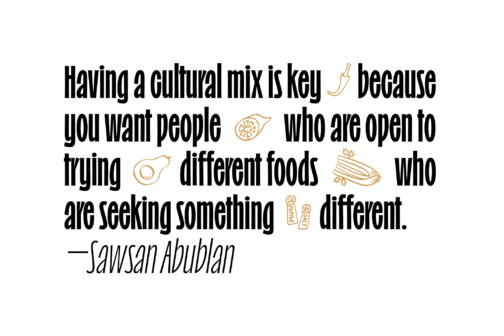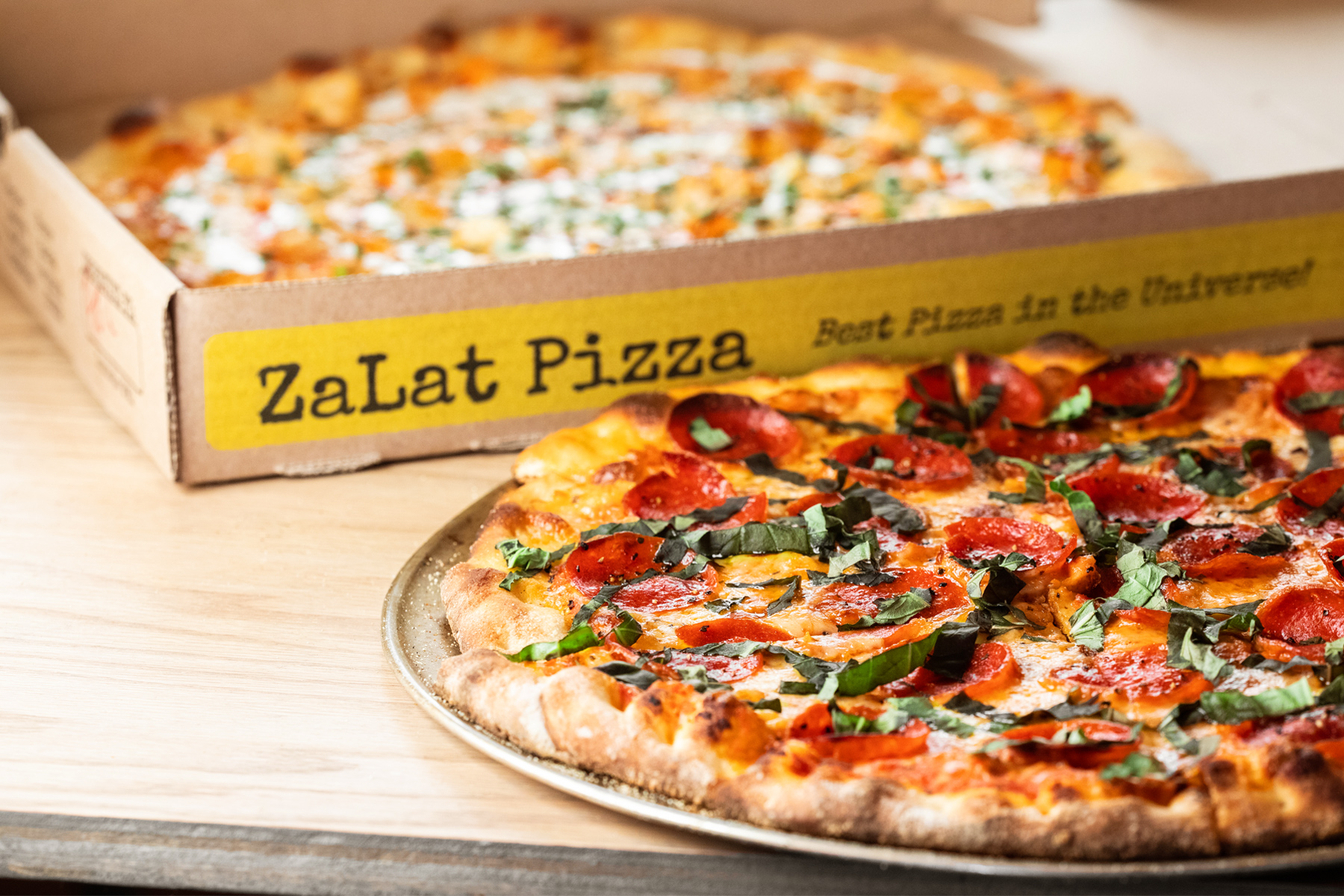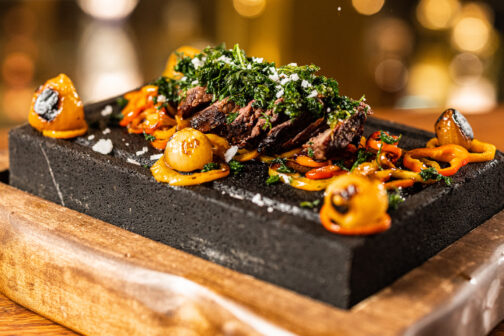Welcome to In the Weeds, our series in which Dallas restaurateurs explain behind-the-scenes aspects of the food service business—parts of the job that customers never see.
Today we’re talking about real estate: how restaurants choose their locations and how important a location is to a business’s success.
Meet our experts:
- Sawsan Abublan, co-owner of fast-casual chain Shawarma Press
- Tanner Agar, co-owner of upscale restaurant Rye and cocktail bar Apothecary
- Jon Alexis, restaurateur behind TJ’s Seafood, Malibu Poke, Escondido, and Ramble Room
- Khanh Nguyen, restaurateur behind ZaLat Pizza and DaLat
- Brent and Juan Reaves, co-owners of Smokey John’s Bar-B-Q
Here’s what they have to say about finding a good location. (My comments and subject transitions are in italics.)
Read part one: What Must Happen Before a Restaurant Can Open?
They don’t teach real estate in culinary school
Chefs are not natural real estate brokers. The challenge of finding your location is harder than it looks, and it can make or break a business from the beginning.
Tanner Agar: It’s the thing you don’t learn anything about until you’re starting your own restaurant. I learned about cooking and serving and wine and cocktails. My first commercial lease I ever saw was the one I was supposed to sign. Pretty scary.
But what are restaurants looking for? What makes an ideal location? There’s no single answer. In fact, it depends on what the restaurant will be.
Sawsan Abublan: It’s not just about, like, being on a corner, because that may not be the most important thing. It is actually the mix of residential and businesses around that location. And believe it or not, the presence of other food vendors. A lot of people say, “No, I want to be away from any other competition. I don’t want to be near other restaurants.” I completely disagree with that. I feel that being at a food destination is very helpful to everyone. As long as there’s not a direct menu clash—we shouldn’t be in the same plaza as another Mediterranean restaurant—other food vendors are a welcome presence because this is inviting to the consumer.
Juan Reaves: Fine dining is a little different, but something that’s quick service, you need to be an environment where everybody else is quick service.
Brent Reaves: I don’t think [location] is as big of a deal as it was ten years ago because of social media. If you’re good and your social media game is strong, people will find you.
Juan Reaves: That’s particularly true if you have a pre-existing brand. It’s still important, when you’re starting out, to be very visible. If you’re expanding your brand and you’ve got a strong social media presence, and you’ve got a little bit of momentum behind your brand, I agree with that. People are gonna find you.

Sawsan Abublan: Having a cultural mix is key, because you want people who are open to trying different foods, who are seeking something different, something new.
If this is starting to sound simple, there’s a big catch. The best locations are not open to most people.
Tanner Agar: The best real estate is never going to be available on the market, because the people with the best real estate know it’s the best real estate. They want to put the best operators in there, so they’re going to call up those operators and offer it to them first. Look at a property like Rapscallion [which closed in May; Quarter Acre opened in the space in December]. That was never publicly available. Basically, if you didn’t know the people involved, I don’t know how you would have possibly gotten into the conversation. And the only way you know them is if you were already an established operator. [Quarter Acre executive chef Toby Archibald told D he had a real estate broker on call.]
Four real-life examples
Four of our restaurateurs walked us through the specific thought process behind choosing their restaurants’ locations. In Agar’s case, he talked about expanding Rye, which already existed in McKinney, to a second location in Dallas. The Reaves family moved an existing business. Jon Alexis and Khanh Nguyen, meanwhile, started from scratch.
Tanner Agar: We were badgering people and saying, would you please give us a chance? And they would say, “You guys haven’t proven that you can be successful in Dallas.” Well, we do have a restaurant, right? We’re not just three dudes. So we said, “We might still be in our twenties, we might only have one restaurant in the suburbs, but we do have a restaurant and would you please come? Will you please come to our table? If you don’t want to tell me that you’re coming, you just want to shop blind, fine.” That’s what we had to do.
Juan Reaves: Our parents started down the street about two miles away. My understanding from Dad was they had a handshake deal with the owner that they could buy the land someday. But he passed away and his kids sold it. We were forced out of our old spot. The idea was to get the closest thing to the old spot we could find. It’s like a two-minute drive, and it completely changed the whole demographic of our of our following. We were right of the edge of Highland Park before. Being two miles away, we pretty much lost that entire clientele. They literally thought we were out of business and didn’t know that we were just two miles away.
Jon Alexis: Our goal has been to find neighborhoods that need restaurants and build them those restaurants. That’s going to be our strategy moving forward, identifying needs and filling those needs. That’s different from going, “I’m going to create the perfect seafood place, where can I put another one?” It’s a very service-oriented approach. Dallas is so scattered that you can target your own part of the city that you understand. You can get a finger to the pulse just talking to the residents and spending time in those neighborhoods.

For Khanh Nguyen, whose ZaLat Pizza concept has grown from a single location to a statewide chain, the biggest eye-opener was the location scouting and real estate assistance tools available to big restaurant groups—but not to the little guys.
Khanh Nguyen: There are so many vendors set up on the [large chain] side of the business that, as a regular restaurateur, you don’t know about. They’re not going to offer assistance because you can’t afford it. You have to have a certain size to go and sign a contract. They say, “you’re going to pay me $50,000 a year to find locations for you, doing all the demographic research and seeing if all the customers are your type of customers in that area.” There are vendors that do all that stuff for you, and I had no idea that that stuff existed.
Probably our first ten locations, we’d drive around, drive the neighborhood, and say, okay, this looks good. [Big contractors] go in, take all your data, find all your customers, slice and dice them, and tell you who all of your customers are. I don’t know if a lot of solo restaurateurs know this, but they categorize all the people in the country in 67 categories as a spender. They have all your data. They have your cell phone data, de-identified, in terms of where you traveled. Every large company has access to demographic data that comes out of your phone. And your car is ratting you out [about where you travel].
When we got big enough and gained the knowledge that these vendors existed, they looked at our demographics, looked at our business model, and came back and told us what the potential of our business model, in terms of nationally, locally, how many units you can put up. They said, “We’ve analyzed that you’re a national chain, not locally bound, and you’ve got at least 1,100 units you can put up, and not only that, here are all the locations where you’re going to make a profit if you put up a store.” They tell you how successful each location will be with a rating. They tweak it; the more stores you open, the tighter your predictions are going to be.
So think about it logically. The chains, when they open in a new city, how are they always successful? We always think, it’s because they know what they’re doing, they have advertising. No, it’s not the advertising. They did the analytics. They know the people who will like their food live right there.
Author







